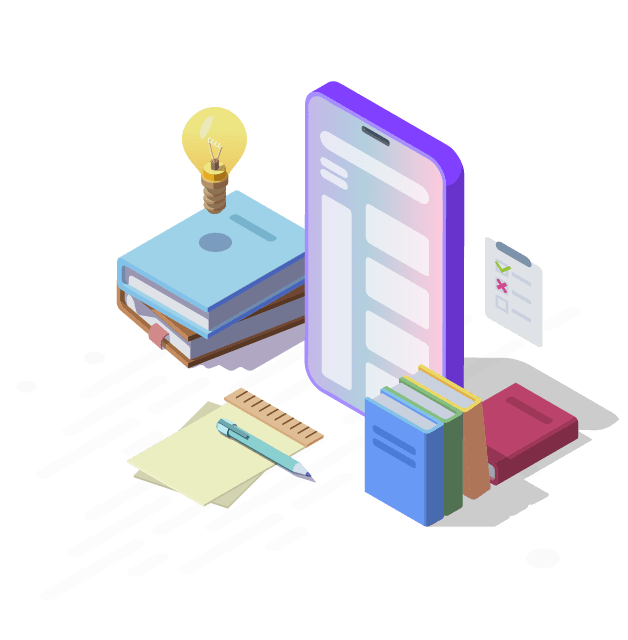In 2022, RMIT is implementing an updated set of Learning & Teaching principles that focus on Blended Learning. To support staff through the transition and implementation of the new L&T principles, the DSC L&T team have collated some useful resources that relate to these updates. Read more below about what is changing at RMIT and what support is available for you.
Key Takeaways
How and why to 'Chunk' lecture content
How to record lecture videos
The future of lectures

Problem: No More Timetabled Lectures
The problem
I had planned lectures across the semester – now I can’t have timetabled face-to-face lectures, what choices do I have? What should I be doing? Who can help me? I don’t have much time!
Why is this a problem?
- RMIT is not allowing timetabled face-to-face lectures anymore.
- RMIT has made this decision as research into pedagogy and student learning provides evidence that traditional didactic lectures are passive in nature.
- Instead students should be coming together synchronously for more engaging, active and meaningful learning experiences such as tutorials, lectorials, studios and workshops.
Learn more
Join the ‘L&T Principles for teaching in 2022’ Sharepoint site to learn more about these changes.
What Should I Do Now?
Lectures can now be delivered online as part of the asynchronous content and activities in Canvas. This allows students to access the lecture content at anytime and at their own pace. It is recommended to convert your traditional lectures to short chunked videos.
Benefits and tips for video chunking your lecture content
Benefits:
- It makes the structure of the content and concepts explicit.
- It allows you to more clearly frame learning objectives with different concepts.
- It supports student cognition and revision.
- It allows breaks for pauses, reflections and other activities.
- It’s a sustainable resource for the future.
Some considerations!
- Organise your materials ahead of time: Ask yourself “What is the most important information I want students to learn from this content?” and prepare that content (e.g. a slide deck).
- Sequence your chunks in a logical order. Consider how many bit-sized (topic) chunks you will create and how they will progress.
- Record yourself presenting on a topic for a maximum 5 minutes. It is better to record videos in small topic chunks, rather than a single 1 hour lecture style recording (research demonstrates that students often stop watching after approximately 6 mins).
Learn how to 'Chunk' your lectures
Read the ‘Chunking your lectures; redesigning your old lecture slides for online learning‘ blog post from the STEM college.
How do I record a lecture video?
How do I record lecture videos using Canvas Studio?
Canvas Studio is a recommended video creation tool that is easy and ready to go in Canvas. Find out from the DSC L&T team how quick and simple it is to create a lecture video in the introductory video below.
Download this quick guide PDF to find out how to record and edit your videos in Canvas Studio: Recording and editing in Canvas Studio
Watch this much more detailed webinar about how to use Canvas Studio if you are looking to find out more features that are available. The video covers everything you need to know, including uploading, recording, editing and embedding your videos (approx 60mins): Canvas Studio: Exploring the Possibilities
Other video options
The following video making options may take longer and require more support. Please reach out to the DSC L&T team if you are considering these at dsc.lt@rmit.edu.au
Record videos and podcasts using Press Play
Located in RMIT Melbourne CBD campus in Building 8, Press Play studios is a digital production space intended to support you in developing high quality digital learning content – available with LT Team support or for some self-service use.
https://www.rmit.edu.au/staff/teaching-supporting-students/press-play
How to make videos on your phone (short video series)
Watch this video series that looks at how to use your phone to create videos and provides tips on lighting, framing and more.
Need help?
Contact the DSC Learning Design team at dsc.lt@rmit.edu.au for support.
Other interesting resources about lectures
Lunchtime Bytes – The future of Lectures (webinar recording)
Filmed in October 2021, this Lunchtime Bytes session looks at how lectures have and will continue to evolve during and post COVID. Guest presented by Associate Professor Andrew Butt, Associate Professor Tayyab Maqsood, and Dr Rucelle Hughes.
You may need to log in to Microsoft Stream to view this video.
RMIT case study: The flipped classroom (video)
Watch this case study to find out how this RMIT educator flips her classroom and has students watch lecture videos prior to their interactive face-to-face session.
Unbundling a lecture (article)
University of Melbourne. 2020
https://le.unimelb.edu.au/news/articles/How-do-I-transform-my-lecture-material-for-online-teaching
Record lectures that make an impact with chunking (article)
Miami University. (2020).
Video length in online courses (research)
https://www.qualitymatters.org/qa-resources/resource-center/articles-resources/research-video-length
Further reading
- Geri, N., Winer, A., & Zaks, B. (2017). Challenging the six-minute myth of online video lectures: Can interactivity expand the attention span of learners. Online Journal of Applied Knowledge Management, 5(1), 101–111.
- Guo, P. J., Kim, J., & Rubin, R. (n.d.). How video production affects student engagement: an empirical study of MOOC videos. L@S ’14 Proceedings of the First ACM Conference on Learning @ Scale Conference
- Lagerstrom, L., Johanes, P., & Ponsukcharoen, M. U. (2015). The myth of the six-minute rule: Student engagement with online videos. Proceedings of the American Society for Engineering Education, 14–17.
- Mayer, R. E. (2014). Cognitive Theory of Multimedia Learning. In The Cambridge Handbook of Multimedia Learning (pp. 43–71). Cambridge University Press.
Need help?
Contact the DSC Learning Design team at dsc.lt@rmit.edu.au for support.
Where to next?
Visit our page on Modes of Delivery to learn more about different approaches to delivering learning or read up on our list of Active Learning strategies.